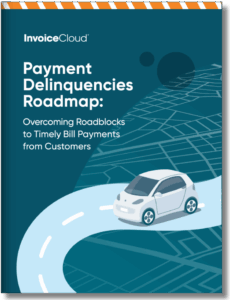Payment flexibility is no longer a nice-to-have — it’s a necessity. For municipalities and utility agencies, offering partial payments is a critical component of modern operational strategy, customer-centric service, and financial resilience.
Increased cost of living, a slowing job market, and global economic challenges have put pressure on many Americans. According to consumer spend research, more than half (56%) of Americans struggle to pay essential monthly bills on time.
This includes 80 million Americans that are struggling to pay their utility bills, forgoing basic expenses like food, education, and health care to keep their lights on.
The Stakes of Not Meeting Customers Where They are
Utility bills are often among the most essential — and least flexible — expenses in a household budget. When a customer faces financial hardship, the inability to pay a bill in full can lead to service disconnections, late fees, and mounting debt.
Partial payments allow customers to contribute what they can, when they can, reducing stress and maintaining their access to critical services.
This flexibility is especially important in regions prone to extreme weather events. After hurricanes, floods, or heatwaves, residents may face unexpected expenses or displacement. In these moments, the ability to make a partial payment can mean life and death.
Essential Payment Channels for Partial Payments
Whether it’s in the wake of catastrophe or simply to accommodate a customer’s busy lifestyle, utilities must offer flexible channels through which customers can make easy, accessible payments wherever they are.
Some digital wallets, for example, are specially designed to accept partial payments. PayPal’s Pay in 4 lets customers split a bill payment into four, interest-free payments, with the first payment due at bill due date.
Even just providing basic digital payment options — like the ability to enroll in AutoPay or make payments via an online portal or mobile device — gives all customers the freedom to make payments at their convenience. Plus, these self-service options reduce call center volumes and manual processing for utilities, freeing up staff to focus on higher-value tasks that serve their community.
In cities like Clearwater, Florida, offering flexible payments through Apple Pay and Google Pay has led to fewer late payments with personalized notifications and improved the city’s disaster preparedness. These convenient, accessible options empower Clearwater resident with easy ways to maintain their service, even during times of crisis.
How Partial Payments Reduce Delinquencies
From the utility’s perspective, partial payments are a strategic tool for improving collections.
Rather than waiting for a full payment that may never come, billers can capture revenue incrementally. This approach helps reduce the number of accounts that fall into delinquency and lowers the administrative burden of collections and shutoffs.
Moreover, partial payments can be integrated into automated payment plans, allowing customers to chip away at balances over time. This not only improves cash flow for the utility but also builds goodwill and trust with customers who feel supported rather than penalized.
Strategies for Supporting Vulnerable Populations
Low-income households, seniors on fixed incomes, and residents recovering from natural disasters are disproportionately affected by rigid billing systems. Partial payments offer a more inclusive approach, allowing these groups to maintain access to essential services while navigating financial uncertainty.
When paired with digital payment platforms that are designed for everyone, partial payments become even more powerful. Customers can make payments from anywhere, at any time, using mobile apps, text-to-pay, or online portals. This accessibility is especially valuable for those who may not have reliable transportation or who are temporarily displaced.
Building Resilience Through Flexibility
Ultimately, partial payments are about resilience — both for customers and for utility organizations.
They provide a buffer against economic shocks, natural disasters, and personal emergencies. They foster trust and transparency. And they align with the broader trend toward customer empowerment in the billing experience.
As utilities continue to modernize their operations, partial payments should be viewed not as a concession, but as a strategic advantage. They reflect a deeper understanding of customer needs and a commitment to service continuity in an unpredictable world.
To learn more about how to cater to customer preferences, especially those of underserved communities, get a free copy of our 2025 Bill Payer Preferences Report below.


